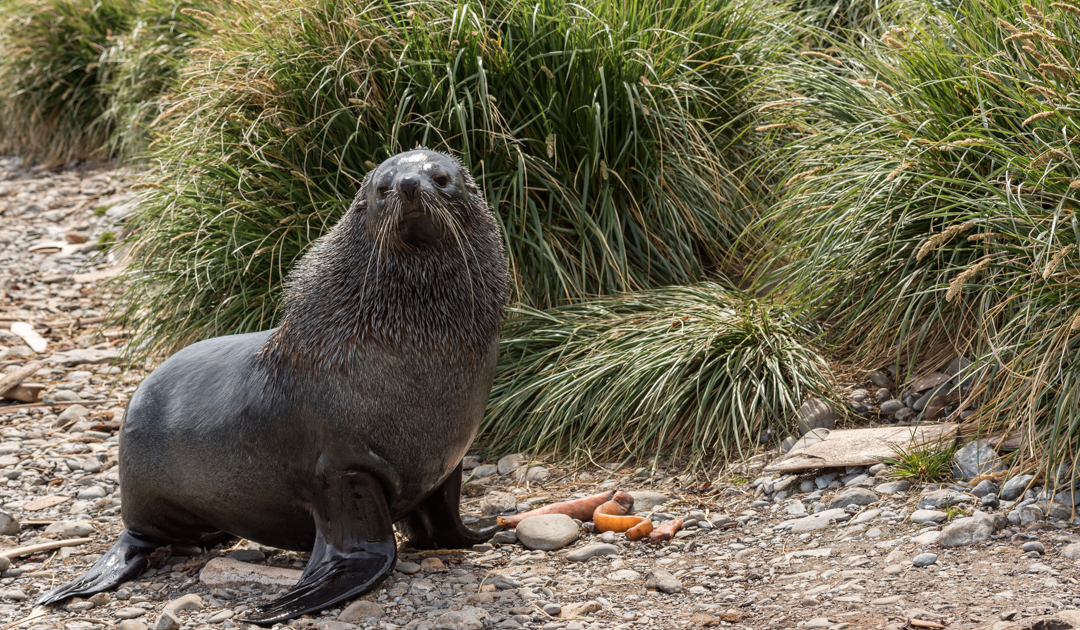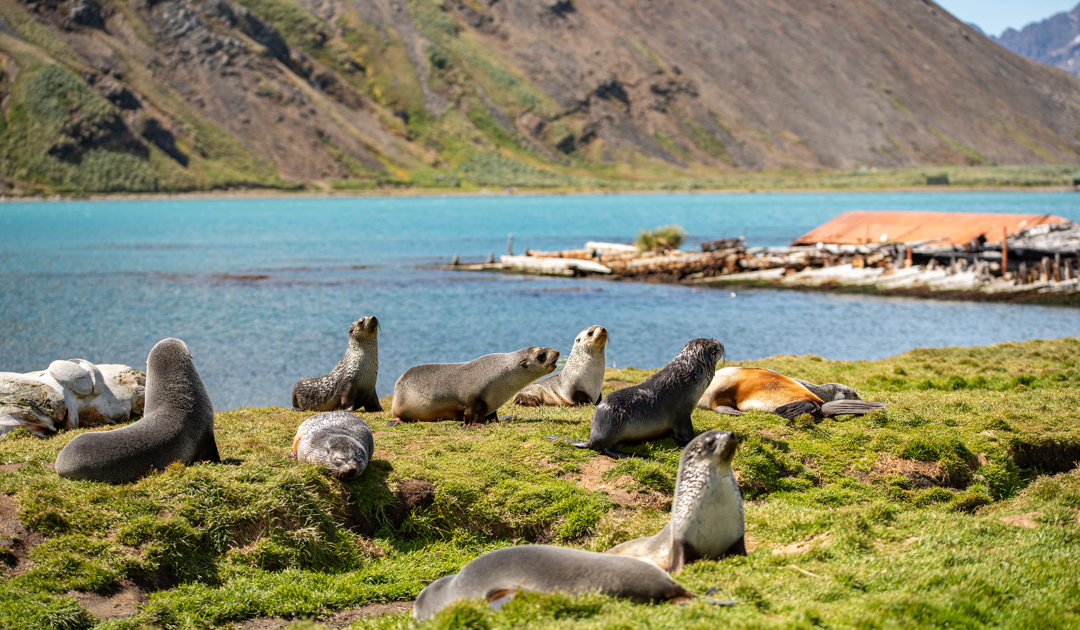
The whiskers play an essential role for seals in their search for food. Thanks to their sensitive vibrissae, the nimble marine mammals can track minute water currents caused by movements of their prey and snap shut with pinpoint accuracy. Scientists at the University of Tasmania in Australia have now shown in a recent study what information they can derive from the vibrissae in relation to the dynamics of the Southern Ocean food web.
Researchers from the Institute for Marine and Antarctic Studies (IMAS) at the University of Tasmania, in collaboration with scientists from other international institutes, have studied the behaviour of Antarctic fur seals (Arctocephalus gazella) during winter foraging from three of their breeding sites in the Southern Ocean. Their results contribute to the global understanding of how Southern Ocean food webs respond to climate change. The study could thus also have an impact on the ecosystem management of Antarctic marine resources.
«Marine predators such as seals must respond to the availability of their prey, and so they have a strong influence on the structure of the food web and its response to change», said Dr. Andrea Walters of IMAS.
Antarctic fur seals are abundant in the Southern Ocean with circumpolar distribution. Their breeding grounds range from the sub-Antarctic islands to the northern tip of the Antarctic Peninsula. In addition to fish and squid, the predators eat large quantities of Antarctic krill, especially around South Georgia.

According to Dr. Walters, knowledge of trophodynamics, i.e. who eats whom, where and when, is fundamental to understanding the structure and function of the Southern Ocean food webs.
In their study, published in Ecological Indicators, the researchers combined animal tracking data with stable isotope values from blood samples and vibrissae taken from fur seals. “Individual ‘isotopic’ markers laid down in the whiskers as they grow provide a chemical record of the different types of prey, such as krill versus fish/squid,” said Dr. Walters. “We collected the whiskers and blood samples during post- and pre-breeding periods from both Antarctic and sub-Antarctic breeding environments.”
By calculating the exact time of whisker regrowth during the extended migration period between two breeding seasons, the researchers were able to accurately compare data from geo-localizing archive sensors (GLS) and isotope tracking to determine the animals’ movement and hunting patterns. This allowed them to “collect a time series of dietary information over the whole time they have been at sea, including winter,” as Dr. Walters explains. “Most studies of these seals occur during the summer breeding season, when changes in foraging behaviour, diet and reproductive success have been linked to climatic variability. But their year-round diet is not well known.”

For this reason, the scientists were particularly interested in taking samples during a hitherto neglected part of the year, from April to December, in order to study the diet of seals in winter. “This information will build a better picture of the food web that links predator to prey, to directly inform spatial conservation planning and ecosystem system management strategies, particularly in light of ocean changes,” said Dr. Walters.
IMAS Assistant Professor Mary-Anne Lea said that research has shown that spatially explicit isotope signatures, so-called isoscapes, can be a useful conservation tool for assessing large-scale movement patterns even when tracking data are not available.
«These stable isotope-based techniques can be applied to any migratory species where long-term tissue archives are available, to enable year-round monitoring of habitat use», said Lea. «This is particularly valuable […] especially for identifying regions that may currently fall outside areas of active management.»
This combined approach of animal tracking and isotope analysis could provide important insights into the structure and function of Southern Ocean ecosystems.
“This could inform large-scale efforts to identify areas of ecological significance for seabirds and marine mammals, which may overlap with fisheries, for future monitoring and management programs,” said Professor Lea.
Julia Hager, PolarJournal





